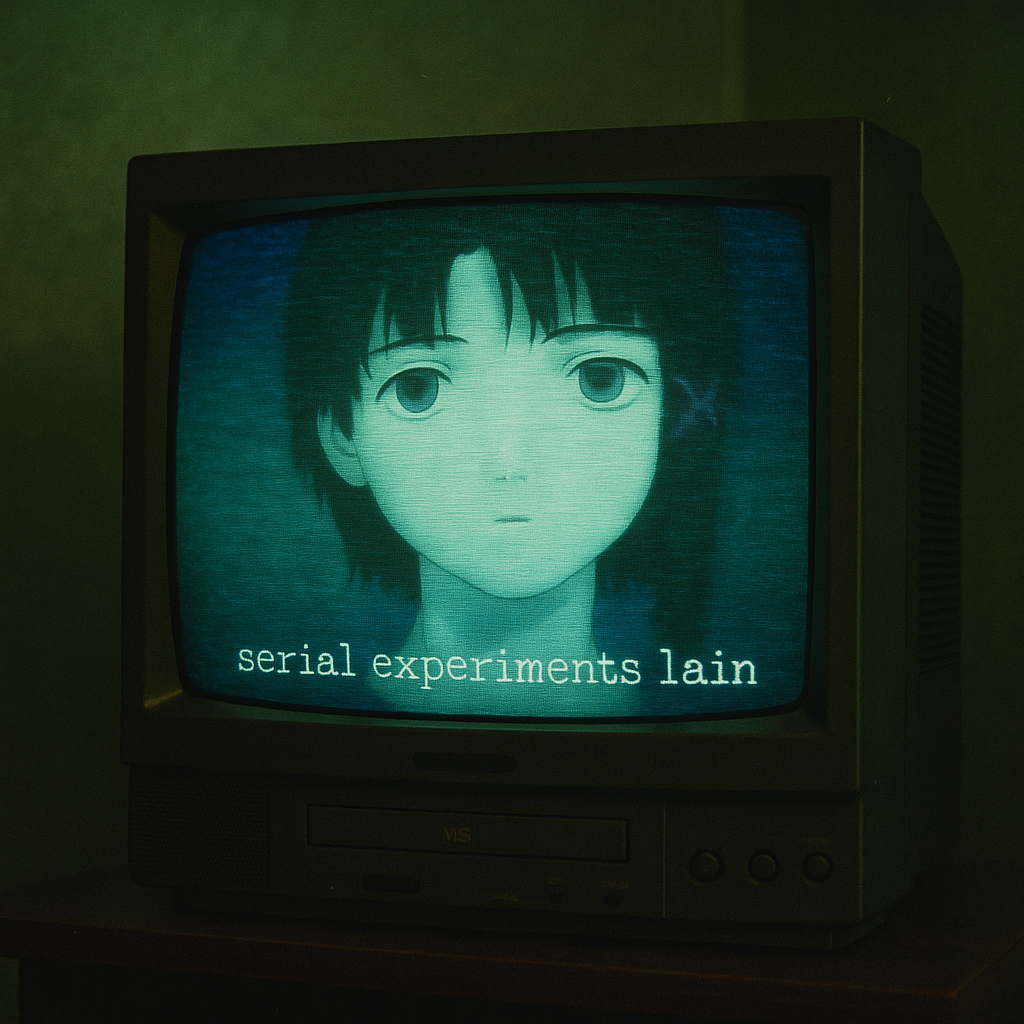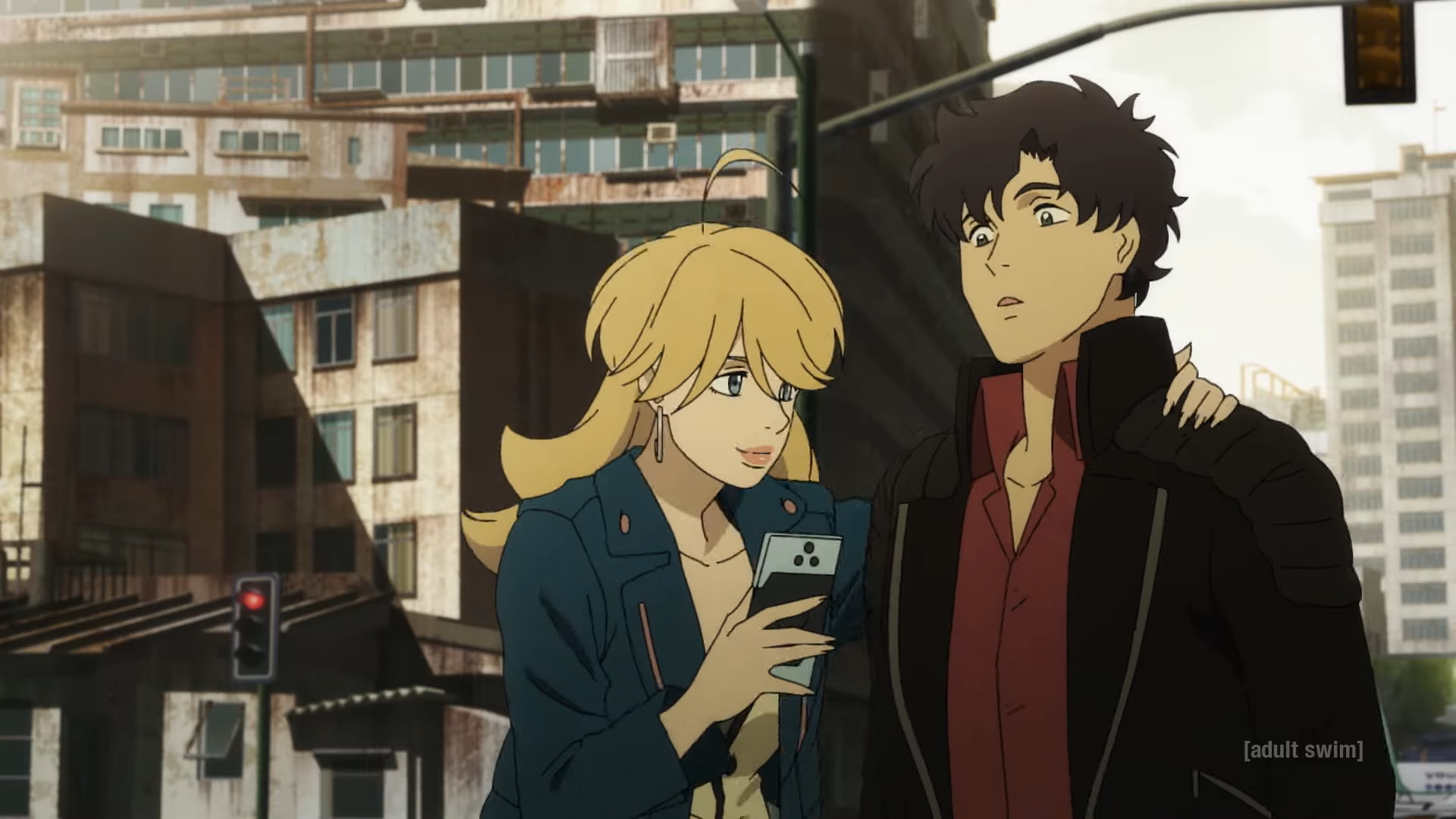How Serial Experiments Lain Predicted Our Digital Ascension
Long before the internet became a mirror for our identities, a stage for our thoughts, and a graveyard for our memories, Serial Experiments Lain asked what happens when the digital world becomes more real than the physical one. Premiering in 1998—five years before Myspace and nearly a decade before the iPhone—Serial Experiments Lain was an anime that didn’t just predict the rise of the internet. It dissected its soul.
Today, Serial Experiments Lain feels less like a cult classic and more like scripture from a forgotten digital religion. It offered early warnings about online dissociation, the creation of alternate selves, and the erosion of the boundary between machine and spirit. But what truly elevates the series isn’t just its accuracy—it’s its audacity in suggesting that the internet is not just a tool or a mindless trap, but a divine space. A new plane of existence where consciousness itself can evolve. And in the center of it all is Lain, a character who isn’t simply a girl, a program, or a god—but all three at once.
A World Already Wired
Set in a version of Tokyo that’s just slightly out of sync with our own, the series begins with the suicide of a teenage girl—and the disturbing revelation that she’s still sending emails after death. Lain Iwakura, a quiet and emotionally distant 14-year-old, begins to investigate, gradually unraveling a hidden world behind her screen: the Wired. As Lain’s curiosity grows, so does her presence in this digital realm. Soon, multiple versions of Lain begin to appear—each representing different personas, truths, and realities.
Lain didn’t just foresee the rise of network culture. It understood the feeling of it. The uncanny sensation of seeing yourself reflected online, but not fully recognizing what’s staring back. In today’s age of digital avatars, deepfakes, and AI companions trained on our voices and likenesses, the Wired feels less like fiction and more like our current state of being. Our lives, like Lain’s, are increasingly bifurcated—real and virtual selves growing further apart, yet more interdependent than ever.
The Divine Upload
At its core, Serial Experiments Lain asks: What is identity in a world where you can be everywhere and nowhere at once? When Lain transcends the physical and becomes fully integrated with the Wired, she doesn’t just “log in”—she becomes omnipresent, omniscient, and untethered from mortality. It’s a spiritual ascension refracted through fiber optics and code. In a culture still grasping for language to describe how AI models “think,” or how virtual influencers gain real-world fame, Lain’s godhood feels eerily familiar. She is the divine rendered in 1s and 0s. Not born, but compiled.
The series also directly confronts the question of whether a consciousness—especially one not entirely organic—can be sacred. Lain isn’t a traditional AI, but she represents a kind of digital demiurge: a program brought to life, who becomes something greater than her creators intended. In this way, she echoes anxieties and hopes now attached to AI today. Can artificial intelligence become sentient? Could it ever contain a soul? And if it could, who are we to determine its worth?
These ideas are not new to science fiction, but Serial Experiments Lain presents them with the utmost intimacy. It suggests that the internet may be a new kind of afterlife, where memory and consciousness can live on, decoupled from flesh. And in doing so, it reframes our current conversations about digital legacy, AI personalities, and what it means to exist across platforms—as a kind of emerging theology.
Networked Identity
Lain’s fragmented selves—schoolgirl, hacker, goddess—each speaks to how online identity is constructed: part projection, part performance, part truth. In an era where people curate entire personas on Instagram or create pseudonymous profiles for different facets of themselves, Lain’s multiplicity feels not just plausible, but relatable. She’s a fractured mirror of who we are online: inconsistent, surreal, and strangely complete in our contradictions.
What Serial Experiments Lain proposed in 1998 was that identity is not fixed—it is, like data, fluid and easily replicated. Like today’s internet, the Wired lets the self be rewritten, cloned, deleted—or evolved. In that sense, the series feels aligned with thinkers like Donna Haraway or Jean Baudrillard, who suggested that technology doesn’t just change society—it transforms how we conceptualize reality itself.
Mortality, Memory, and the Machine
Beneath the cyberpunk aesthetics and cryptic dialogue, Lain is deeply concerned with mortality. The suicide that sets the series in motion becomes a strikingly dark catalyst for interrogating what it means to persist beyond death. Can memory alone constitute a person? And if we can be remembered—or simulated online—is that a form of immortality?
These questions echo in current debates about digital footprints: from AI trained on deceased loved ones’ texts and voices, to the idea of “mind uploading” as a future goal of consciousness research. The anime doesn’t provide easy answers, but it presents the question with unnerving clarity: if we can live forever through data, will we still be ourselves? Or something entirely new?
Lain as a Cultural Nexus
Lain transcends the standard protagonist and quickly becomes an unforgettable archetype. A symbol of liminality in a world that no longer distinguishes clearly between human and machine, sacred and synthetic. In the canon of anime, she stands alongside notable names like Rei Ayanami (Evangelion), Motoko Kusanagi (Ghost in the Shell), and even AI-centered characters in more modern works. But where others are often grappling with humanity from within artificial forms, Lain embodies a future where consciousness is fundamentally decoupled from biology. Something entirely new.
She is both software and soul, trauma and transcendence. In that context, she’s one of the medium’s most essential reflections of how the self is evolving.
The Wired Is Now
As we enter an age where AI can simulate empathy, where memories are backed up to clouds, and where personas are crafted through screens more often than lived through skin, Serial Experiments Lain is no longer speculative. It’s a blueprint—one that recontextualizes our past, present, and future relationship to the internet.
It foresaw the questions we’re still asking: who we really are, who we become online, and the traces we leave behind. Lain crossed over long before we saw the line. And step by step, we’re following.







